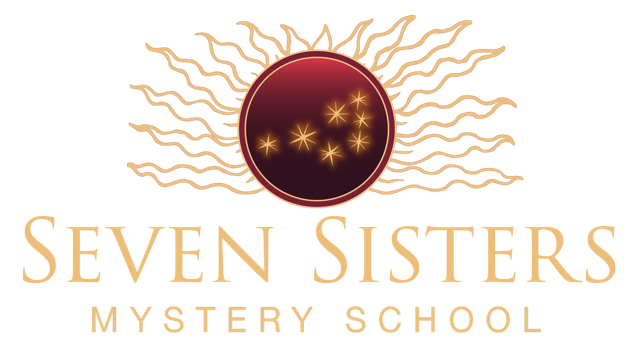Virgin Mother Goddesses of Antiquity
by Marguerite Rigoglioso, Ph.D.
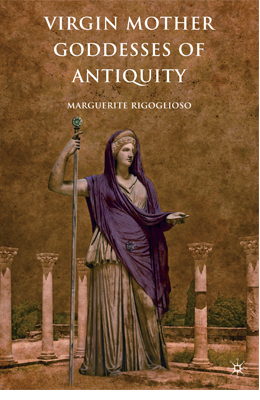 Various goddesses of the ancient Mediterranean world were once understood to be Virgin Mothers––creators who birthed the entire cosmos without need of a male consort. This is the first book to explore evidence of the original parthenogenetic power of deities such as Athena, Hera, Artemis, Gaia, Demeter, Persephone, and the Gnostic Sophia. It provides stunning feminist insights about the deeper meaning of related stories, such as the judgment of Paris, the labors of Heracles, and the exploits of the Amazons. It also roots the Thesmophoria and Eleusinian Mysteries in female parthenogenetic power, thereby providing what is at long last a coherent understanding of these mysterious rites.
Various goddesses of the ancient Mediterranean world were once understood to be Virgin Mothers––creators who birthed the entire cosmos without need of a male consort. This is the first book to explore evidence of the original parthenogenetic power of deities such as Athena, Hera, Artemis, Gaia, Demeter, Persephone, and the Gnostic Sophia. It provides stunning feminist insights about the deeper meaning of related stories, such as the judgment of Paris, the labors of Heracles, and the exploits of the Amazons. It also roots the Thesmophoria and Eleusinian Mysteries in female parthenogenetic power, thereby providing what is at long last a coherent understanding of these mysterious rites.
Purchase the book here:
Reviews
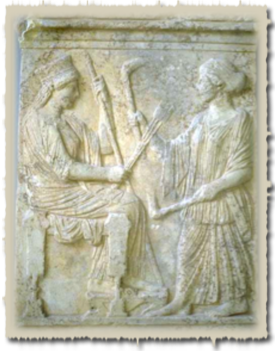 “In Virgin Mother Goddesses of Antiquity, Marguerite Rigoglioso explores the power of virgin birth, or parthenogenesis, as the primal creative process. The clarity of her analysis reveals how pervasive and influential this motif and its rites were in the ancient world. Most interesting is her remarkable explication of the Eleusinian Mysteries, where––by her application of the “missing piece” of virgin birth––she makes sense of much that has been passed over or ignored in the ancient texts. This is an original piece of scholarship that dares to imagine traditions at the foundation of Western culture in an entirely new light. As with any paradigm-shifting theory, some may challenge Rigoglioso’s interpretations, but all readers will recognize that parthenogenesis, as a symbol of profound spiritual perception, could not have received a more articulate spokesperson. One feels in reading her work that she is writing from inside a tradition that we didn’t even know existed, and the authenticity of her writing makes it all the more accessible and inviting.”
“In Virgin Mother Goddesses of Antiquity, Marguerite Rigoglioso explores the power of virgin birth, or parthenogenesis, as the primal creative process. The clarity of her analysis reveals how pervasive and influential this motif and its rites were in the ancient world. Most interesting is her remarkable explication of the Eleusinian Mysteries, where––by her application of the “missing piece” of virgin birth––she makes sense of much that has been passed over or ignored in the ancient texts. This is an original piece of scholarship that dares to imagine traditions at the foundation of Western culture in an entirely new light. As with any paradigm-shifting theory, some may challenge Rigoglioso’s interpretations, but all readers will recognize that parthenogenesis, as a symbol of profound spiritual perception, could not have received a more articulate spokesperson. One feels in reading her work that she is writing from inside a tradition that we didn’t even know existed, and the authenticity of her writing makes it all the more accessible and inviting.”
–– Gregory Shaw,
Professor of Religious Studies, Stonehill College, and
author of Theurgy and the Soul: The Neoplatonism of Iamblichus
“With this study, Marguerite Rigoglioso has substantively corrected the common perception that ‘a few’ of the Greek goddesses have an inconsequential association with parthenogenesis. Her insightful explication of the parthenogenetic motif in the attributes of all the pre-Greek goddesses, as well as in the Thesmophoria and the Eleusinian Mysteries, establishes the generative powers of the Virgin Mother goddesses as a central dynamic in the pre-Greek substratum of Western religion.”
–– Charlene Spretnak, author of Lost Goddesses of Early Greece
Virgin Mother Goddesses of Antiquity by Marguerite Rigoglioso, PhD
Reviewed by D.M. Murdock/Acharya S at:
http://truthbeknown.com/virgin-mother-goddesses.html#.UH9KUrROTdk
Table of Contents
Introduction
Chapter 1: In the Beginning: Chaos, Nyx, and Ge/Gaia
Chapter 2: Athena/Neith/Metis: Primordial Creatrix of Self-Replication
Chapter 3: Artemis: Virgin Mother of the Wild, Patron of Amazons
Chapter 4: Hera: Virgin Queen of Heaven, Earth, and the Underworld
Chapter 5: Demeter and Persephone: Double Goddesses of Parthenogenesis
Chapter 6: The Gnostic Sophia: Divine Generative Virgin Angeleen Campra
Excerpt
The goddesses have stories to tell. One such story––far too long ignored––is that, in their original, unadulterated form, they were parthenogenetic.
The word parthenogenesis comes from the Greek parthenos, “virgin,” more or less, and gignesthai, “to be born.” It means, essentially, to be born of a virgin––that is, without the participation of a male. For a goddess to be parthenogenetic thus means that she stands as a primordial creatrix who requires no male partner to produce the cosmos, earth, life, matter, and even other gods out of her own essence. Plentiful evidence shows that in their earliest cults, before they were subsumed under patriarchal pantheons as the wives, sisters, and daughters of male gods, various female deities of the ancient Mediterranean world were indeed considered self-generating, virgin creatrixes. This is the first book to explore that evidence comprehensively.
Understanding goddesses of Graeco-Roman antiquity in this way allows us to resolve the seemingly confounding paradox, noted by various observers, of the simultaneous virginity and generativity attributed to certain deities in their earliest mythological and cultic material. How can a virgin create life? How can a creatrix be virgin? The information presented throughout this volume suggests that, rather than being contradictory, these two co-existent aspects form a complex of virgin motherhood in which goddesses procreated despite being consortless. It allows us to see the virginity of various goddesses as representing not sterility, but inviolable and sovereign creative power. In revealing some of our oldest divinities in the West to be Virgin Mothers, this book offers a fresh angle on the original nature and agency of these deities, thereby complementing and, in a sense, completing earlier feminist analyses of such goddesses.
Virgin Mother Goddesses of Antiquity also provides evidence to support progressive feminist theories that early ancient Mediterranean cults were based in a matriarchal ethos. Moreover, by exposing a little-explored theological development––the appropriation of parthenogenetic power on the part of the divine masculine in religious stories––the book offers new insights about the ferocity of the gender wars that took place under the cultural transition to patriarchy. It explores the ramifications of such theological appropriation for the priestesshoods dedicated to Virgin Mother goddesses, as well as for women and culture more broadly. . . .
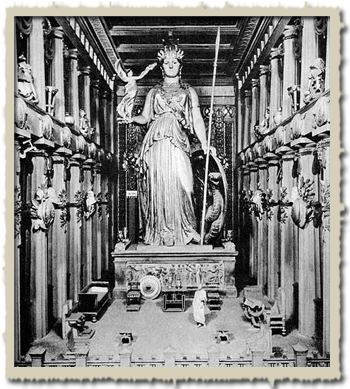 I begin the study with the oldest divine entities described in Hesiodic and Orphic theogony––Chaos, Nyx/Night, and Ge/Gaia (Earth)––highlighting details of their autogenetic (self-creating) and parthenogenetic (self-generating) activities. I discern in their stories an older subtext in which such goddesses held positions of primacy in cult, which I argue corresponded with an earlier period of matriarchal social structure. I move to Athena, the goddess who most famously held the epithet Parthenos, “Virgin.” I offer a pioneering examination of her relationship to the Greek Metis and the Egyptian Neith to show that Athena was originally not the sterile, father-serving deity of classical Greece, but rather a parthenogenetic creatrix in her own right. My extended analysis of the mythology associated with Athena’s mother, Metis, highlights material generally ignored or glossed over in the scholarly literature, particularly details suggestive of Metis’s own parthenogenetic powers, as well as of her masculinization as the god Phanes in Orphic theology. My analysis of Neith’s autogenetic/parthenogenetic nature similarly serves as one of the more comprehensive portraits of this Libyo-Egyptian goddess to date. In short, it reveals the tremendous original power and cultic importance of this goddess and exposes the arrogation of her self-generative capacities to the male sphere in Egyptian theogony and the corresponding shift from matriarchy to patriarchy during the pharaonic era.
I begin the study with the oldest divine entities described in Hesiodic and Orphic theogony––Chaos, Nyx/Night, and Ge/Gaia (Earth)––highlighting details of their autogenetic (self-creating) and parthenogenetic (self-generating) activities. I discern in their stories an older subtext in which such goddesses held positions of primacy in cult, which I argue corresponded with an earlier period of matriarchal social structure. I move to Athena, the goddess who most famously held the epithet Parthenos, “Virgin.” I offer a pioneering examination of her relationship to the Greek Metis and the Egyptian Neith to show that Athena was originally not the sterile, father-serving deity of classical Greece, but rather a parthenogenetic creatrix in her own right. My extended analysis of the mythology associated with Athena’s mother, Metis, highlights material generally ignored or glossed over in the scholarly literature, particularly details suggestive of Metis’s own parthenogenetic powers, as well as of her masculinization as the god Phanes in Orphic theology. My analysis of Neith’s autogenetic/parthenogenetic nature similarly serves as one of the more comprehensive portraits of this Libyo-Egyptian goddess to date. In short, it reveals the tremendous original power and cultic importance of this goddess and exposes the arrogation of her self-generative capacities to the male sphere in Egyptian theogony and the corresponding shift from matriarchy to patriarchy during the pharaonic era.
By detailing Athena’s identification with Neith, I not only restore the lost motherhood of this Greek goddess in her earliest phase, but also provide the most detailed argument to date attesting to her African origins, a topic that has been sidestepped by all but a few scholars. This work includes laying out important evidence attesting to the possible historicity of the female warrior Amazons who venerated Neith/Athena in North Africa. In my treatment of Athena’s Grecization, I further expose the transition from matriarchy to patriarchy in Greece, which most likely
occurred during the Mycenean period, as the independent goddess was made the daughter of the new universal creator god, the male Zeus.
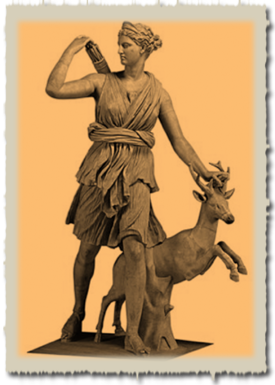 I then analyze a second Greek goddess who possessed the title Parthenos: Artemis. I explore her mythology to argue that she, like Athena, originally was considered a parthenogenetic creator deity. In doing so, I resolve the seeming paradox of Artemis’s dual role as a goddess who rejected heterosexual eroticism yet protected women’s birthing process. I also examine her connections with Athena/Neith, looking at her relationship as the goddess of the Thermadon Amazons and their links, in turn, with the Libyan Amazons. I introduce here consideration of the possible emergence of the West Asian/Thermadon Amazons from the North African/Libyan Amazons,
I then analyze a second Greek goddess who possessed the title Parthenos: Artemis. I explore her mythology to argue that she, like Athena, originally was considered a parthenogenetic creator deity. In doing so, I resolve the seeming paradox of Artemis’s dual role as a goddess who rejected heterosexual eroticism yet protected women’s birthing process. I also examine her connections with Athena/Neith, looking at her relationship as the goddess of the Thermadon Amazons and their links, in turn, with the Libyan Amazons. I introduce here consideration of the possible emergence of the West Asian/Thermadon Amazons from the North African/Libyan Amazons,
thereby opening the door to future study about possible links between the cults of Artemis and Athena.
I next turn to the third Greek goddess know as Parthenos, Hera, and probe her myths to provide evidence that, before she was made the wife of Zeus in Olympian mythology, she was considered a virgin creatrix, as well. These include stories of her parthenogenetic birthing of Ares, Hephaestus, and Typhon and legends associating her with the apples of the Hesperides, which, I argue, were symbols of virgin birth. My analysis allows for a unique interpretation of the famous myth of the Judgment of Paris as representing a theological moment in which the goddess Hera lost her parthenogenetic power as the sought-after apple migrated to the realm of Aphrodite, where it became forever fixed as a symbol of heterosexual eroticism. Further, I offer an original argument that the accounts of several of Heracles’ famous twelve labors, which involved what I propose were symbols with parthenogenetic associations (such as the hydra, lion, stag, and woman’s zônê, or “belt”), represented a male theological attack on human female parthenogenetic ability. I also show that they quite possibly referred to an aggression against what I argue was an entire priestesshood dedicated to divine birth, a topic upon which I have elaborated in my first book, The Cult of Divine Birth in Ancient Greece (Palgrave Macmillan 2009).
Having explored the three goddesses known as Parthenoi, I consider two other Greek goddesses with parthenogenetic stories: Demeter, the goddess of the grain, and Persephone, her daughter and Queen of the Underworld. I provide evidence that their myth encodes a story of female self-replication. I further posit that this element served as the great “mystery” associated with the two goddesses’ oldest cult, one that found expression in the rituals dedicated to them, among them the Thesmophoria and the Eleusinian Mysteries. By applying various aspects of the theory that a cult of divine birth existed in ancient Greece, I am able to offer the most coherent reconstruction of these rites to date, one that explicates their purpose, meaning, and function in startling new ways.
I elucidate, in particular, that the Thesmophoria was originally a celebration of the parthenongenetic capacity of not only the two goddesses, but also their virgin priestesses. I argue that Persephone’s rape served as the cosmic paradigm for the interruption of women’s mysteries in this regard and corresponded with the transfer of divine birth practices in service of producing holy males, literally considered to be the sons of gods, who ushered in the patriarchal era. I detail evidence that the installation of this new phenomenon was the raison d’etre for the Eleusinian Mysteries but show how the rite nevertheless retained its roots in female-centered reality. By carefully sifting through mythological motifs and the testimony of ancient writers, I present the case that both male and female initiates of the Mysteries had to undergo an altered-state descent into the underworld that involved their experiencing the rape of Persephone through the ritual use of an artificial phallus. The experience, I show, forced initiates to confront the violence of the Masculine and resolve the inner gender war through a journey into paradox and, ultimately, wholeness.
The book concludes with a chapter by Angeleen Campra on the goddess Sophia as portrayed in Gnostic texts. Exploring the Valentinian creation story, the Thunder, Perfect Mind, and On the Origin of the World, Campra offers a feminist critique of the Gnostic framing of various parthenogenetic motifs in Sophia’s mythologem, including the goddess’s spontaneous generation of the demiurge Ialdabaoth. She argues that the rendering of such female generativity as transgressive and the transferring of legitimate parthenogenetic capacity to the male creator god signaled a final theological moment in the demotion of the Virgin Mother as primal creatrix in the West.
Readers familiar with my first book, The Cult of Divine Birth in Ancient Greece, will recognize some overlap between it and the present volume. In that book, I also discuss the parthenogenetic nature of Athena/Neith, Artemis, and Hera. However, the explorations in the present study are far more comprehensive. Moreover, the new material on Demeter, Persephone, and Sophia, goddesses who were given only a passing mention in the earlier work, fleshes out this book and makes a unique contribution to the literature on goddesses of antiquity.
Marguerite Rigoglioso, Virgin Mother Goddesses of Antiquity,
2010, Palgrave Macmillan, reproduced with permission of Palgrave Macmillan.
This extract has been taken from the author’s original manuscript and has not been edited.
The definitive version of this piece may be found in
Virgin Mother Goddesses of Antiquity by Marguerite Rigoglioso,
which can be purchased from http://www.palgrave.com.
Text Copyright: Marguerite Rigoglioso
Have questions? Contact my team here
